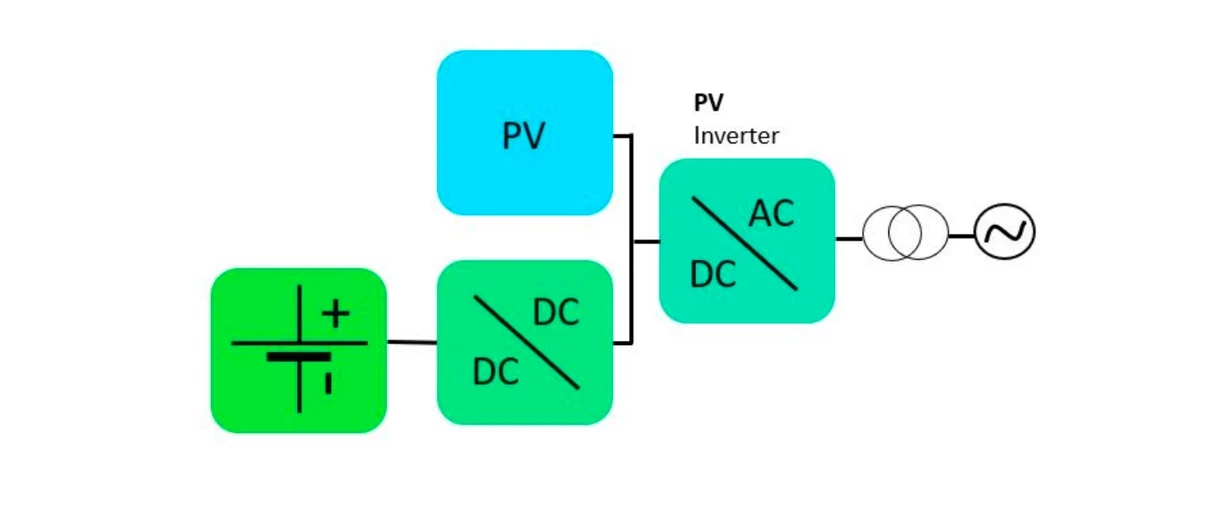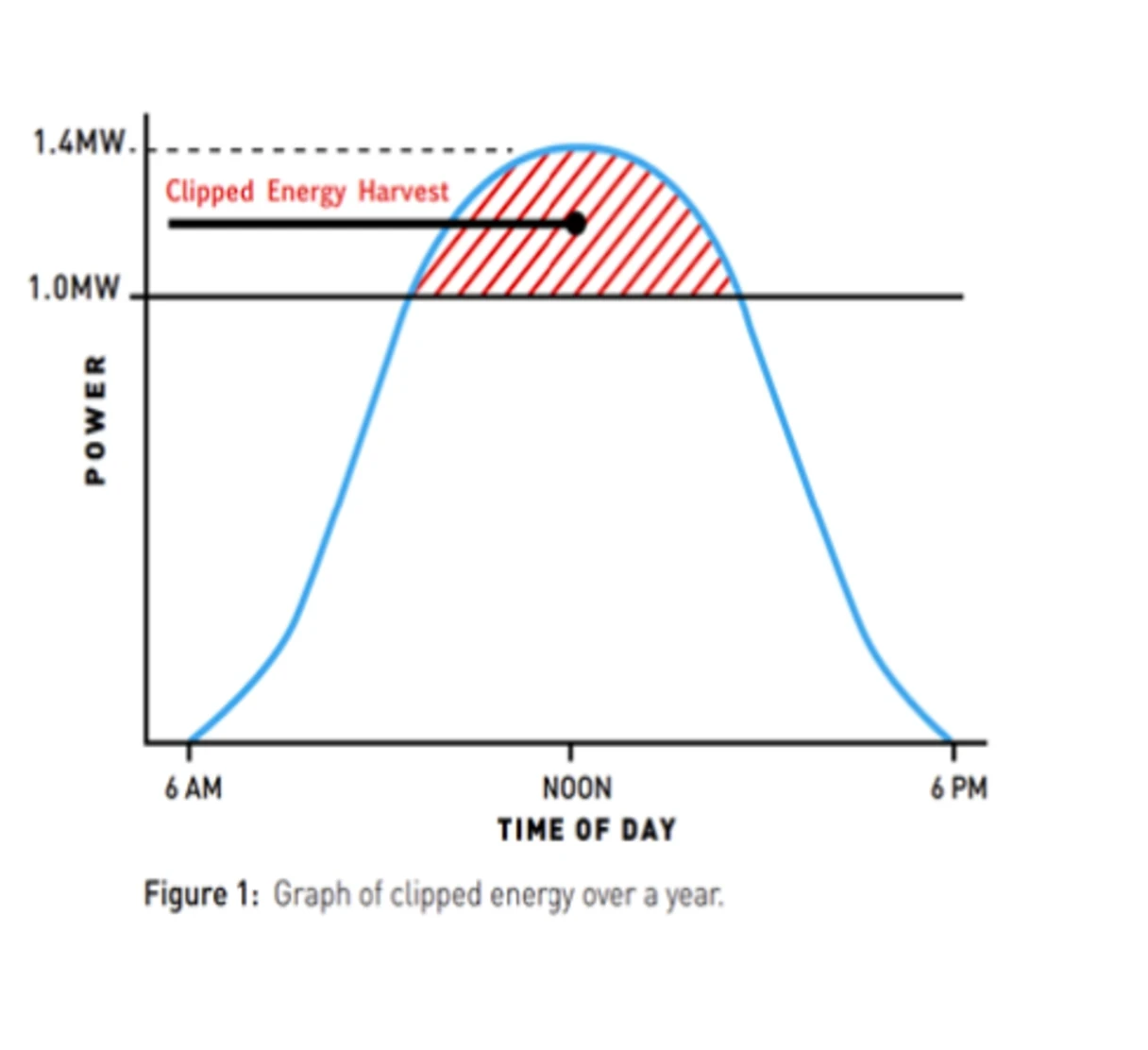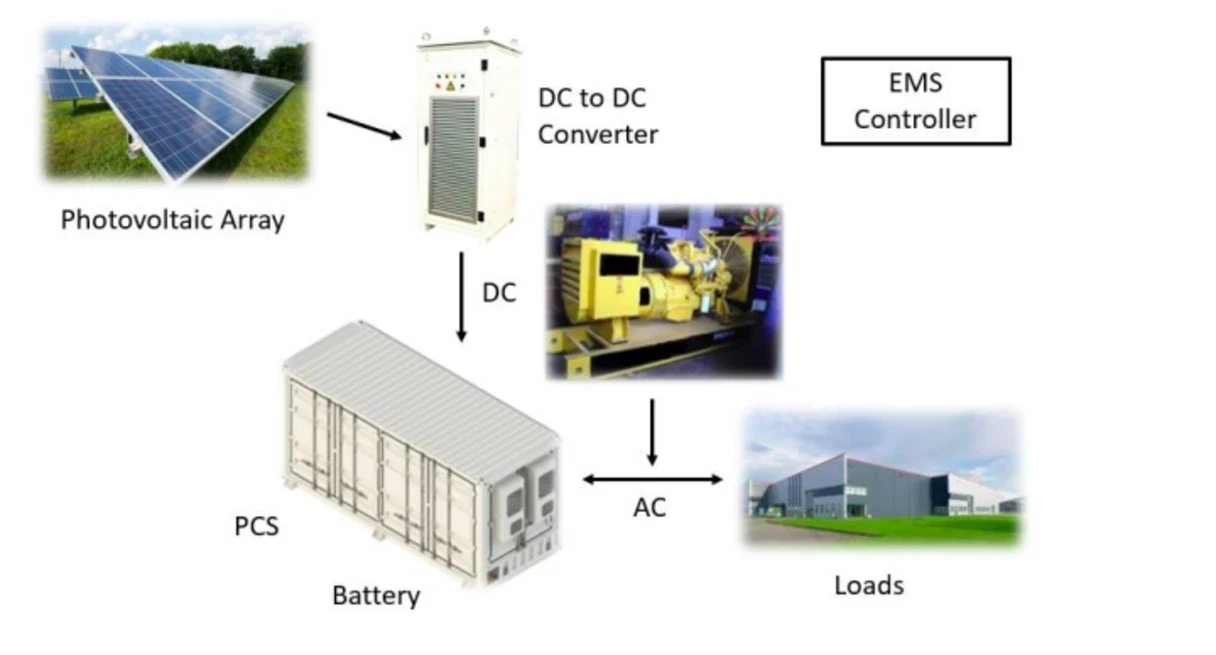Combining energy storage with solar-generated power has long been the “holy grail” for the renewable energy industry. By adding energy storage, the constantly varying nature of solar energy can be turned into a dispatchable energy source.
The earlier system solutions were actually parallel combinations of PV power systems and energy storage system (BESS). These paralleled systems were combined at the AC outputs of the respective inverters (Power Conditioning Systems or PCS) and were designated as AC coupled power systems. This type of integrated PV and energy storage system is still used in cases where there is an existing PV system or roof-mounted PV system that uses small inverters.
A more efficient and cost-effective way of combining solar-generated energy and energy storage is to use the PV energy to charge the batteries on the DC side and use a common PCS to deliver the AC power to the grid. There are two ways to accomplish this DC coupled system architecture. One is to use a PV inverter that is connected on the DC side to both the PV array and a DC-to-DC converter that charges/discharges a battery. In this way, surplus solar energy is stored in the battery during daylight hours so that it can be used effectively to extend the “solar day.” This stored energy will supply the PV inverter after there is no longer sufficient energy from the PV array to fully power the inverter.
In the block diagram below, the DC-to-DC converter follows the constantly varying voltage at the PV array input to the PV inverter at the PV side of the converter and manages the battery voltage at the battery side. This capability is inherent to the buck/boost converter design in both the charge and discharge modes.
The graph shows the surplus energy available during the middle of the day that can be diverted to the battery through the DC-to-DC converter.
This is a relatively inexpensive way to add energy storage to a conventional PV power system. The functions that are normally available with this type of system include the following:
- Capacity firming
- Energy time shifting
- Ramp rate control
Factors to consider for this type of DC coupled system:
- In order to have enough surplus energy available for battery charging from month to month, the PV array is usually sized for a higher-than-normal capacity relative to the PV inverter capacity.
- The PV system architecture must include central PV inverters with capacities of 500kW or more in order to use the 500kW DC-to-DC converters.
- String inverter systems are usually incompatible with this type of DC coupled system, so string inverter and microinverter systems are normally used in AC coupled systems only.
- The batteries can only be charged from the PV system, so charging from the grid to ensure full battery charging is not an option.
- The short winter days as well as extended cloudy days throughout the year will limit the system’s ability to maintain a high battery state of charge (SOC), which can impact the performance and life expectancy of the battery cell blocks.
- Since these systems use PV inverters that can’t operate without the presence of a grid, they can’t be used for resiliency, microgrids, black start, etc.
The DC coupled system that provides the most application options uses a bi-directional battery inverter instead of a PV inverter and uses 100% of the PV array energy to charge the batteries.
With this system architecture, the DC-to-DC converter acts as a solar charge controller that manages the charge voltage and current from the PV array to the battery. The PCS (Storage Inverter) can be supplied with energy from the battery, the PV array, or both depending on the availability of solar energy, the state of charge of the battery, and the load requirements. Since there is no PV inverter in this DC coupled system, it can operate on or off the grid and the batteries can be charged both from the PV array and from the grid. This allows for better battery state of charge management than with PV charging only.
The functions that are normally available with this type of system include the following:
- Capacity firming
- Energy time shifting
- Ramp rate control
- Peak demand reduction
- Frequency management
- Resiliency to grid failures
- Microgrids for extended off-grid operation
- Black start capabilities
A typical Commercial/Industrial, DC coupled, PV and energy storage system would look like the pictorial diagram shown below. In this example, the PV array is connected to the FlexGen FlexPod battery system via a DC-to-DC converter, while the AC output of the PCS is connected to the building loads. The standby generator is connected in parallel with the FlexPod to support the building loads during outages.


